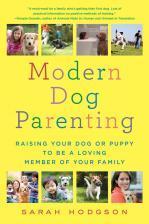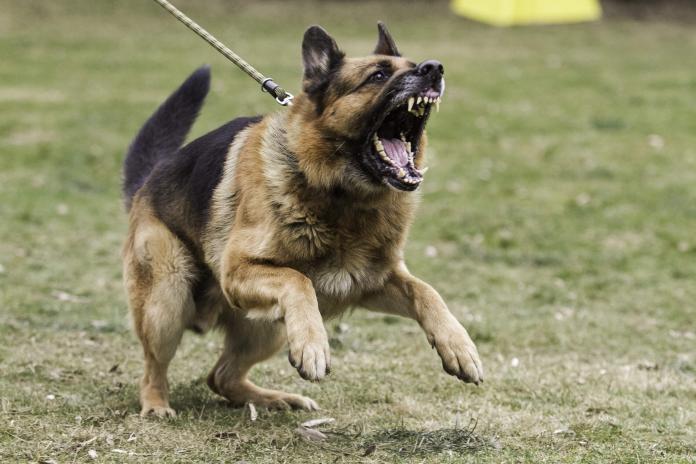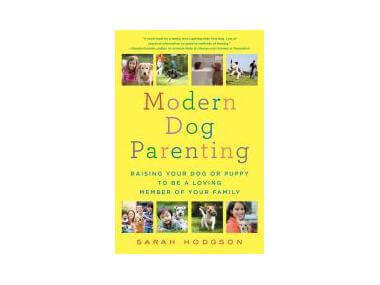Managing 5 Key Types of Dog Aggression
There are six levels of dog aggression and five key types. What are they and how can you manage them—before things get out of hand.
Aggressive dogs are speaking out. They are sick and tired of being treated like stuffed animals, kissing strangers and tolerating rude behavior from kids and family members alike.
Dogs who bite aren’t bad—they’re just stressed out! Unfortunately, reality bites (quite literally in this case).
When a dog bites out of fear or intense frustration, a pleasing chemical reaction takes place in its brain. Biting releases dopamine, the same neurotransmitter implicated with heroin use. This soothes the dog’s emotions and has an immediate effect on the trigger (whatever is causing the reaction, person or another dog).
But dogs do not bite out of the blue, and it’s easy to prevent a mishap when you learn the various types of aggression and how to recognize when a dog is feeling guarded.
Today’s Quick and Dirty tip takes you on a journey into the mind of an aggressive dog.
Levels of Aggression
First, consider the six levels of aggression as outlined by veterinarian and dog expert Ian Dunbar.
| Country | |
|---|---|
| Level | Description |
| 1 | At first a dog will give warning signs: a cold glance, stiff posture or audible growl. |
| 2 | Contact but no deep wounds. This bite may bleed from contact, but there are no punctures. |
| 3 | One to four puncture wounds, some bleeding. |
| 4 | Deep puncture wounds that may cause bruising (from pressure bite) or cuts in multiple directions (from a bite-the-shake move). |
| 5 | Multiple levels; four bites. |
| 6 | The victim is dead. |
Level six is pretty dramatic, but remember that aggression is not a universal response to all situations. When, where, and how a dog expresses aggression depends a lot on both his nature and nurture.
A dog can be conditioned to regulate his intense feelings or removed from a situation before he becomes too reactive. For example, if I see a client’s terrier-mix issue me a warning stare and stiff posture as I near his bone, I am not going to stick my face in his to test his response. I will need to earn his trust more slowly as I offer treats to show that I come in peace. A resource guarder will not be won over by the back of a hand or the shock of a collar; these responses will only confirm his resolve to guard his resources.
Research now shows that most passive dogs only resort to biting after their calming signals, such as averting eye contact, walking away, or growling, are ignored. More assertive dogs will give a fair warning too: a direct stare, forward-leaning posture, stiffened tail and firm, low growl. Always remember to respect this dog—and every dog’s—personal space. Dogs are not stuffed animals.
Similar studies trace the brain chemistry in dogs who during various interactions.
In playful and loving interactions, the neurotransmitter serotonin is released, along with flexibility, a wagging mid-line tail (neither tucked low or arched high), and quick but comfortable eye contact. Serotonin release is a good thing.
The neurotransmitters norepinephrine, epinephrine (a.k.a. adrenaline), and cortisol are released when a dog feels stressed, fearful, or threatened. Think fight or flight here. Intolerable levels of such neurotransmitters often lead to biting.
Dogs usually start exhibiting aggression as they reach sexual and social maturity, between 8 months to 3 years of age. A puppy is a lot like a toddler (studies show that too) in that they are inhibited around adults. While those adoring few months are good for bonding, most puppies lose their passivity with their puppy teeth, and this is when more assertive behaviors begin to develop.
If these behaviors are not curbed or redirected, assertiveness can lead to aggression. Fortunately, only a small percentage of fearful, defensive or reactive dogs become dangerous. Usually, out-of-control aggression can be traced to genetic or physiological sources, inadequate nurturing, lack of socialization or confrontational handling.
For more tips on how to manage and prevent aggression, as well as how to handle it, preorder my book, Modern Dog Parenting.
Types of Aggression
Dogs become aggressive for different reasons. An injured or sick dog may bite to protect itself from pain, but a dog who snaps at the mailman or lunges when he’s pushed off the couch is another story. Here are the most common forms of canine aggression:
Dominance—The Control Freak. These types of dogs use aggression to control other pack members or to move up the hierarchical ladder. This type of aggression is sometimes seen in families, especially when the adult(s) use dominance to control behavior. These dogs may pick on the more vulnerable pack members, including children. These dogs need a well-orchestrated training program that involves all family members, so the dog learns to respect everyone.
Possessive Aggression—Mr. All Mine. Dogs may guard resources like sleeping spots, food, or toys if they come from large litters, were raised in or live in multi-pet environments, or have a propensity for hoarding. Encourage sharing by trading desirable objects for goods of equal or more desirability until the behavior subsides.
Territorial Aggression—The Yard Guard. Defenders of the house, home, and all points in between, these dogs will bark at every passing stranger. With each successful defense—the delivery guy always leaves—the behavior works. When someone enters the house, warnings may escalate. It’s important to socialize these dogs and restrict freedom when visitors or workers may drop in.
Predatory Aggression—The Misplaced Hunter. As dogs evolved from predators, most dogs still enjoy the thrill of the chase. Dogs with predatory aggression, however, take the chase too far, moving into the capture phase. These dogs may bite bikers, joggers or fast-moving children or pets. Play games that help this dog express his predatory impulses without endangering prey-like pets and kids. Employ a conditioning program to discourage misplaced excitement.
Fear-Based Aggression—The Scaredy Dog. This is the most common source of aggression towards strangers. A lack of early socialization leaves these dogs fearful and stressed. Often, they are not assertive but furtive, using aggression to make others Just Go Away. Careful socialization and reward-based obedience can reduce their fears and improve behavior.
A skilled trainer can help pinpoint the type of aggression your dog is showing, work with you to identify the triggers and design a multi-faceted plan to manage and rehabilitate your dog.
Usually, canine aggression can be controlled, but it cannot always be “cured.” Ultimately, you are responsible for the safety of your dog and the people he meets.

Having trouble communicating with your dog or puppy? Sarah Hodgson, aka the Happy Dog Mom, is here to help. She’s written multiple best-selling books on dog training, and her next book, Modern Dog Parenting, will be out Fall 2016. You can reach her at sarah@whendogstalk.com or visit her website whendogstalk.com.





